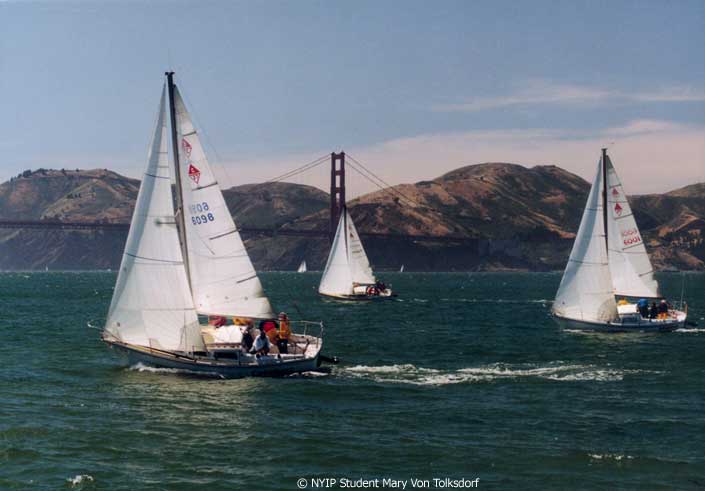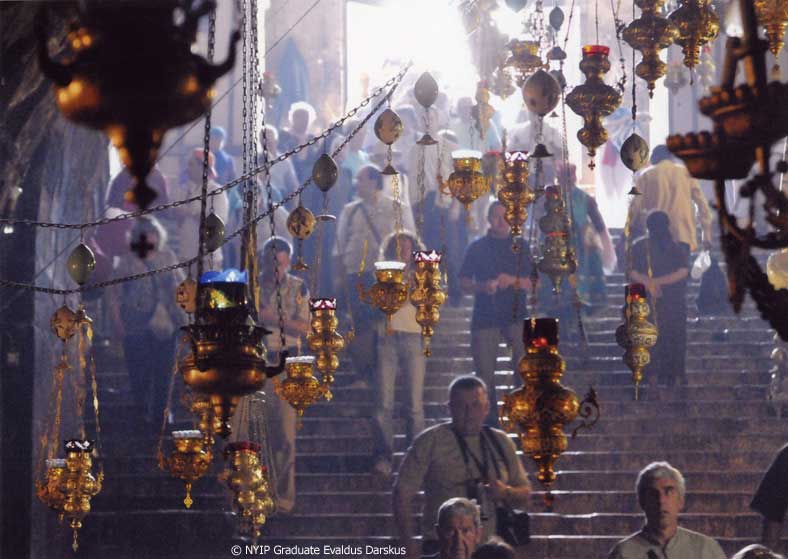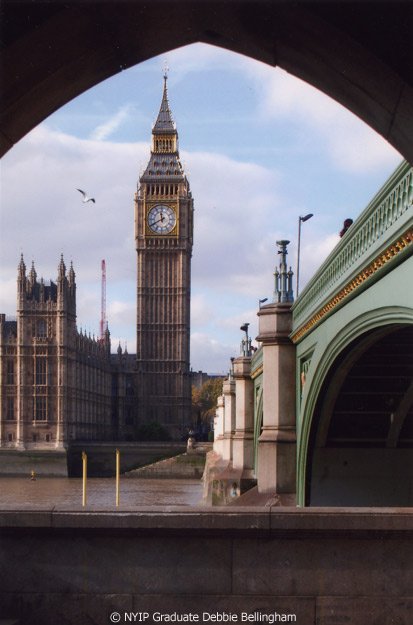Photo by NYIP Photography School Student Mary Von Tolksdorf

An old (olde?) English folk ballad has an opening line that states that "summer is a-cumen in." Despite the quaint spelling, it is a fact that summer once again is upon us. And, as the summer solstice prepares us for the inevitable dog days we also welcome (most of us) the chance to be out of doors in the golden sunshine. We may even imagine the sunlight even if it's the monsoon season!
This month's picture was created by NYIP Student Mary Von Tolksdorf of Corte Madera, California and shows three racing yachts, possibly of the 18-ft Lightning Class. The yachts, very likely, are sailing in the famous Hearst Regatta held annually in San Francisco. In the background we see the Golden Gate Bridge and Marin County (Tiburon, Sausalito, et al.).
I witnessed the Hearst Regatta when I was in San Francisco in 1960, and it was in that beautiful city that I commenced my first serious photography with a Leica that I bought there at Brooks Camera Store near Ghirardelli Square.
The Golden Gate Bridge has a kind of double significance for me personally.
First, it was designed by my first cousin (twice removed) — Joseph B. Strauss, a world famous engineer who designed bridges in many lands. His statue stands in Golden Gate Park near the San Francisco entrance to the bridge.
The second significance, even more important than the first, is that the bridge was my first view of America in 1952. I was on a troop ship (filled with soldiers and sailors) returning from Korea after having spent seventeen rough days at sea. I was going home after a bitter year in Korea, and I was unhurt and alive! The ship arrived in San Francisco Bay in the dark of night, and we could not dock or debark because of the hazards. So, we waited until the next morning. As Oscar Hammerstein II said. "oh, what a beautiful morning." The sun was beaming brightly, and the red iron oxide paint on the bridge gleamed in the golden sunshine. An Army band on the dock was playing "The Stars and Stripes Forever."
Thus, San Francisco (for me) will always be a special place. Perhaps that suave urbane actor George Sanders summed it all up in that great movie "All About Eve". He said, "ah, San Francisco — an oasis in the California desert."
The first things that we notice in Von Tolksdorf's photograph, even before we we see the Golden Gate Bridge and the Marin County hills, are the three racing yachts. There are a couple of other boats in the far distance, but the emphasis is clearly on the trio in the foreground. One might even wonder if the photographer bribed the yachtsmen to get their boats in this exact triangular position, but I suggest this as tongue-in-cheek. All of you know, though, that we cannot discount lucky accidents in photography. Lucky accident? Ansel Adams would have said that chance favors the prepared, a phrase that he borrowed from the great Louis Pasteur.
In other words, the photographer's keen eye and ready camera play roles as important as the so-called lucky accident.
Lest we forget (Kipling's words, not mine), all good photographs should display in one form or another the NYIP Three Guidelines For Great Photographs: strong subject matter, focusing of attention on the subject, and ultimately simplifying the picture by eliminating unnecessary items. I said "in one form or another" deliberately. Some writers on photography have five guidelines, some less than three, but almost all of these writers are touching on the same themes.
The strength of the subject matter is obvious — a beautiful day, the sharp angular boats and bridge, the gentle rolling hills, all worthy of our attention.

Now to the focusing of attention on the subjects. I have already noted the position of the three yachts and the two tiny ones in the background. But look at the white sails, the white spume of the boats' wakes standing in sharp contrast to the dark hills and even darker water. Light juxtaposed against dark tonality helps to give a strong three-dimensional feel to any photograph.
Also, look at the division between land and sky. More space here is given to the land and water, less to the sky. And for good reason. The land and water are far more important in this picture than the sky and therefore deserve more space. In evaluating many student assignments over the years I have seen the wrong emphasis placed in two different ways.
First, the space is often divided evenly between land and sky, a composition that does not show what is more important and furthermore tends to be static and even boring. The second, and the more dangerous, is undue emphasis given to the sky. If the sky contains huge cumulonimbus clouds a la Ansel Adams there is still a question. While the clouds themselves may be magnificent, they are only of true importance if the photographer intended for them to be the subject. But that is often not the case; the real subject matter may be on the ground, and the "sturm und drang" of Beethoven skies should not necessarily overwhelm the real subject matter at ground level!
The photographer has simplified the picture by limiting her view to several boats, a few hills, the bridge, the sky, and the water. That's it.






